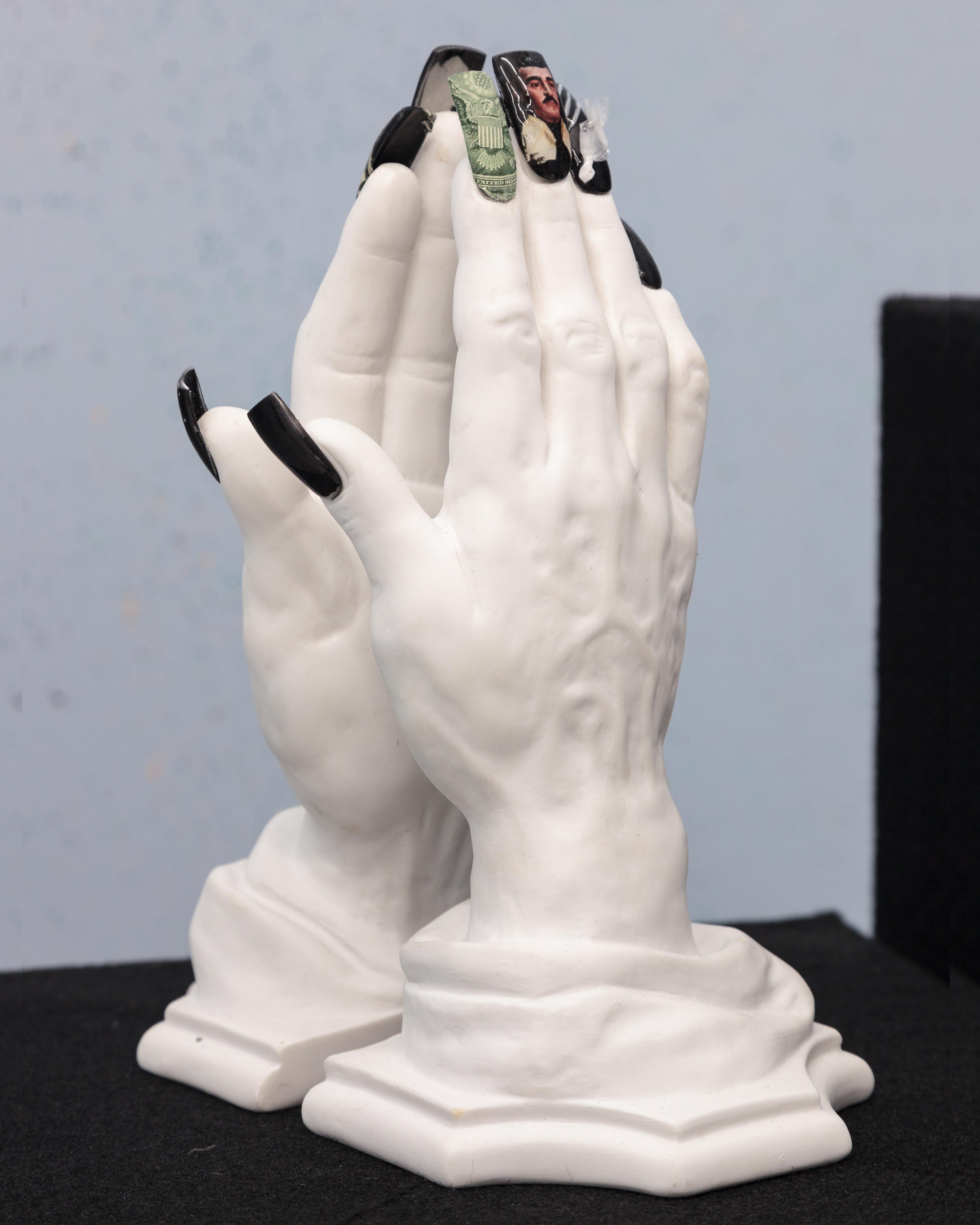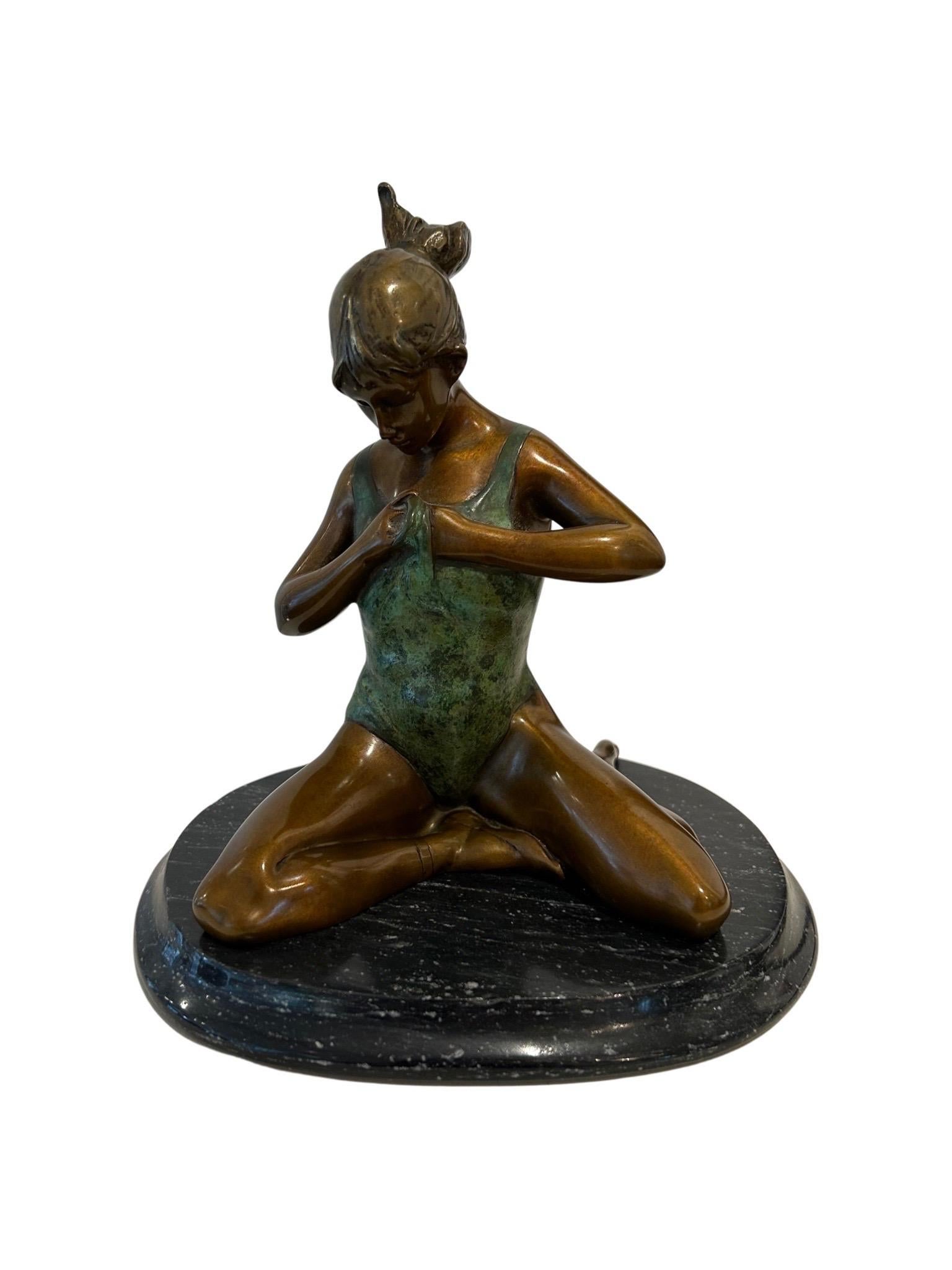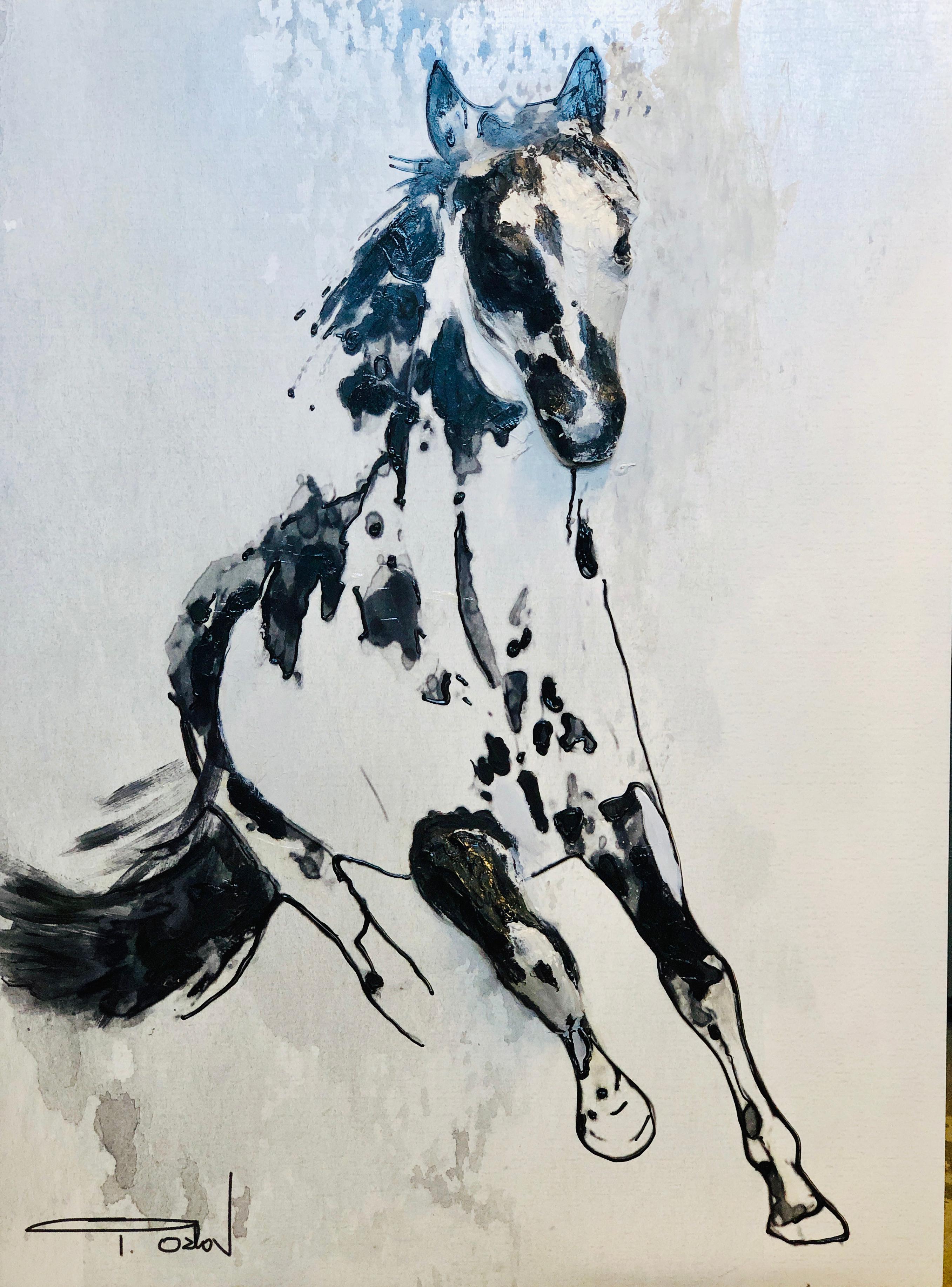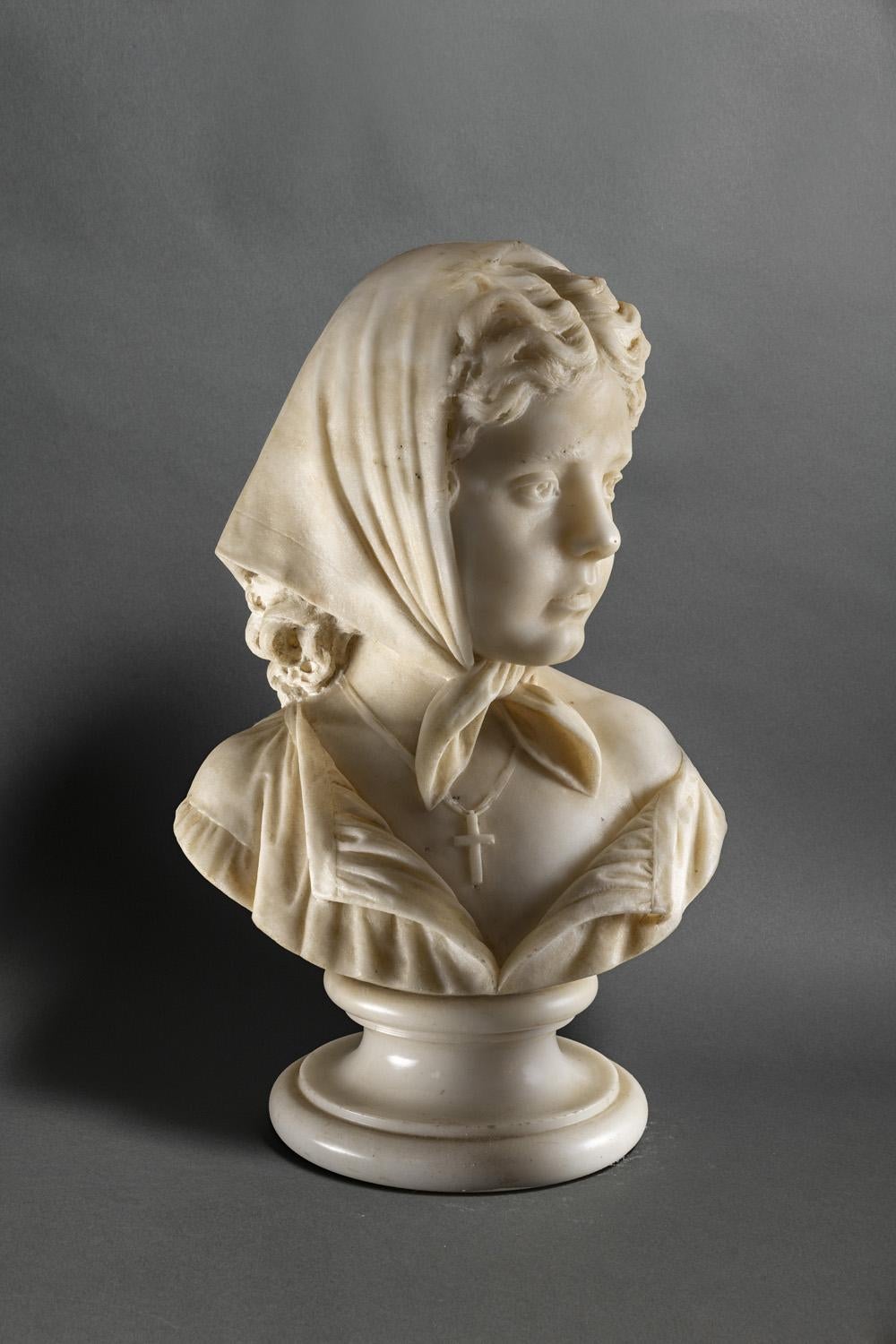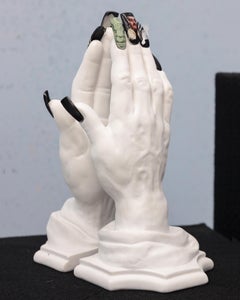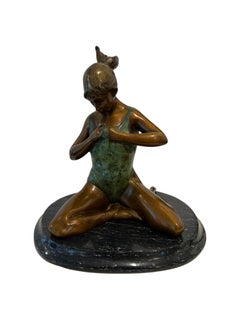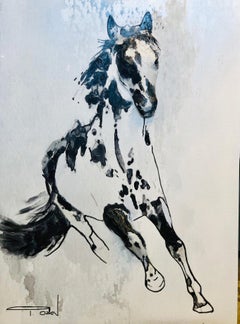Articoli simili a Green Frog
Vuoi altre immagini o video?
Richiedi altre immagini o video al venditore
1 di 10
Mark MorrisonGreen Frogca. 1940
ca. 1940
Informazioni sull’articolo
Mark Morrison (1895-1964)
Green Frog, ca. 1940
Carved green soapstone
6.5" wide, 5" deep, height is 3.25"
Provenance: Estate of Mrs. Mark Morrison.
Born:
Kingfisher, OK
Education:
University of Missouri
John Flannagan, mentoring and private instruction ca. 1940
Art Students League with William Zorach and Jose de Creeft
Exhibited:
Sculpture Guild Annuals
Audubon Artists Annuals
National Academy of Design Annuals
Pennsylvania Academy Annuals
Metropolitan Museum Artists for Victory, 1942.
Newark Fine Arts Museum
Whitney Annuals
International Exhibition, Fairmount Park, Phila. 1950
Nebraska Fine Arts
Metropolitan Museum Exhibition, 1951
Boston Arts Festival
National Sculpture Society Annuals
Memberships:
Sculpture Guild, Inc.
Audubon Artists
Awards:
Ellen Prince Speyer Award, N.A. 1950
Architects League of New York, Avery Award, 1958, 1959.
Museum Collections:
Metropolitan Museum of Art
National Academy of Design
Pennsylvania Academy of Fine Arts
Whitney Museum of American Art.
Museum of Fine Arts, University of Arizona
Mark Morrison began his life as a sculptor while nearing his professional retirement. In the late 1930s and into the 1940s, he like many of the younger artists in New York City availed himself to the great many academies, museums, teachers and mentors it offered. He studied with John Flannagan before his death, and then Jose de Creeft and Williams Zorach at the Art Students League. Having an attraction and aptitude for the ideas of the direct carving movement and good thorough craft, he took advantage of the growing public interest in a new American sculpture, and worked quickly to become a contemporary of his teachers. Through the 1950s, he exhibited with them, sold, entered competitions, and won awards. He was a sculptor with a sure hand, a head for academy, patience, and promise. Morrison died suddenly in October 1964 having had just married his second wife earlier the same year. Mrs. Mark Morrison would offer a small piece for one more exhibition with a Sculptors Guild in 1965. The work was never seen again until 2025.
Morrison was born on New Year’s Day in 1895 in Kingfisher, Oklahoma, a small rural city not yet a part of the Union. The only child of a Protestant minister, and one of only 16 that in 1913 would graduate from his high school in Higginsville, Missouri. He studied agriculture at the University of Missouri, at some point leaving to enlist in the army. He would reach the rank of Major. After the war, he married his first wife, moved to New York and began work for Tidewater Oil. He worked with them until 1954, retiring as a vice president. At the time he was living at 8 W. 13th St., his studio already set up in a corner of the basement in his apartment building.
The earliest exhibition on record for a work by Morrison was the Artists for Victory show at the Metropolitan Museum, 1942. Earlier the same year, John Flanagan committed suicide. The death was a terrible blow. Flannagan had been a profound influence, sharing both technical instruction and philosophical guidance. The importance of their friendship during the 1930's cannot be overemphasized. Morrison is part of Flannagan's artistic legacy, his only known pupil during the mythical sculptor's short life. Born in the same year of 1895, both artists came to NYC from rural regions of the US: Oklahoma and North Dakota respectively. In contrast to Morrison's stable life, Flannagan was a deeply troubled, difficult, impatient and unpredictable man. To have considered mentoring Morrison, his teacher must have seen a kindred spirit and artist of extraordinary potential. In turn, Morrison must have been a sympathetic and patient pupil who recognized the importance of overlooking personal shortcomings for the invaluable instruction of an artistic genius.
Morrison did not show regularly for almost 10 years spending this time educating himself, exhibiting here and there. He continued his sculpture studies at the Art Student League with Zorach and de Creeft, spending most nights working stones in his studio. His mature style would become clearly realized by 1950, a synthesis of the naïve and the sophisticated, what Flanagan called "the image in the rock", and the polished fluid marbles of Zorach.
Black Swan was featured in the Sculptors Guild exhibition "In Time and Place" at the Museum of Natural History in March 1952. And exhibit pushing those points in their mission to assist the public to fuller appreciation of sculpture, and that the sculpture and the architecture of buildings may again be planned simultaneous and homogeneously. Morrison's swan was the centerpiece of the modern living room designed by Earnshaw, Inc. In the same hall of the museum one year earlier Morrison and other members of the group demonstrated process at work in seven makeshift studios. He would continue to exhibit in Guild annuals and Audubon Artist annuals. His sculpture "Gosling" was given a special honorable mention from the Architects League in the Avery Competition of 1958, runner up to Zorach. In 1959, when he showed "Grasshopper" he won outright.
He had moved his studio to a larger more private space a few blocks away in Greenwich Village. By 1964 his work had become larger in scale, his groupings more challenging and lively, more considerate of light and the nature of the stone itself. He had lost weight and for a man of nearly 70 years old was in very good health. His death was unexpected and unfortunate, probably of a stroke . His legacy has survived, largely unknown until now in a small ranch in upstate New York.
- Creatore:Mark Morrison (1895 - 1964, Americano)
- Anno di creazione:ca. 1940
- Dimensioni:Altezza: 10,8 cm (4,25 in)Larghezza: 15,24 cm (6 in)Profondità: 12,7 cm (5 in)
- Tecnica:
- Movimento e stile:
- Periodo:
- Condizioni:
- Località della galleria:Wilton Manors, FL
- Numero di riferimento:1stDibs: LU245216297662
Informazioni sul venditore
4,9
Venditore Platino
Venditori Premium con valutazione 4.7+ e tempi di risposta entro 24 ore
Fondazione nel 2007
Venditore 1stDibs dal 2015
399 vendite su 1stDibs
Tempo di risposta standard: 2 ore
- SpedizioneRecupero del preventivo…Spedizione da: Wilton Manors, FL
- Politica di reso
Alcune parti di questa pagina sono state tradotte automaticamente. 1stDibs non può garantire che le traduzioni siano corrette. L’inglese è la lingua predefinita del sito.
Garanzia di autenticità
Nell’improbabile caso in cui si verifichi un problema con l’autenticità di un articolo, contattaci entro un anno per ottenere un rimborso completo. DettagliGaranzia di rimborso
Se il tuo articolo non corrisponde alla descrizione, è danneggiato durante il trasporto o non arriva, contattaci entro 7 giorni per un rimborso completo. DettagliAnnullamento entro 24 ore
Hai un periodo di tolleranza di 24 ore per annullare il tuo acquisto, senza necessità di fornire spiegazioni.Venditori professionali selezionati
I nostri venditori di livello internazionale devono aderire a rigorosi standard di servizio e qualità, garantendo l’integrità delle inserzioni.Garanzia miglior prezzo
Se scopri che un venditore ha pubblicato altrove lo stesso articolo a un prezzo più basso, applicheremo lo stesso prezzo.Consegna globale affidabile
La nostra rete di vettori leader del settore offre opzioni di spedizione specializzate in tutto il mondo, inclusa la consegna personalizzata.Altro da questo venditore
Mostra tuttoYoung Penguin
Mark Morrison (1895-1964)
Young Penguin, ca. 1950
Carved Tennessee Marble
8.5" x 7" by 3.5", height is 13 inches.
Provenance: Estate of Mrs. Mark Morrison.
Born:
Kingfisher, O...
Categoria
Metà XX secolo, Realismo, Sculture
Materiali
Marmo
6.000 USD
Gatto che dorme
Mark Morrison (1895-1964)
Gatto che dorme, 1940 circa
Granito del Vermont scolpito
Larghezza 7,5", profondità 5", altezza 7".
Provenienza: Proprietà della signora Mark Morrison.
...
Categoria
Metà XX secolo, Realismo, Sculture
Materiali
Granito
Cinnamon Bear
Mark Morrison (1895-1964)
Cinnamon Bear, ca. 1950
Carved red granite
11" wide, 11" deep, height (including wood base) is 15"
Provenance: Estate of Mrs. Mark Morrison.
Born:
...
Categoria
Metà XX secolo, Realismo, Sculture
Materiali
Granito
5.000 USD
Larva
Mark Morrison (1895-1964)
Larva, ca. 1940
Carved brown soapstone
9.5" long, 4" wide, 3.75" tall
Provenance: Estate of Mrs. Mark Morrison.
Born:
Kingfisher, OK
Education:
Un...
Categoria
Metà XX secolo, Realismo, Sculture
Materiali
Pietra
4.000 USD
Scimmia
Mark Morrison (1895-1964)
Scimmia, 1940 circa
Granito intagliato del New Hampshire
8,5" per 5", altezza 16,5".
Provenienza: Proprietà della signora Mark Morrison.
Nato:
Kingfi...
Categoria
Metà XX secolo, Realismo, Sculture
Materiali
Granito
8.000 USD
Chipmunk
Mark Morrison (1895-1964)
Chipmunk, ca. 1940
Italian granite
5" by 4", height is 4 1/8"
Provenance: Estate of Mrs. Mark Morrison.
Born:
Kingfisher, OK
Education:
Universit...
Categoria
Metà XX secolo, Realismo, Sculture
Materiali
Pietra
2.000 USD
Ti potrebbe interessare anche
Punte per unghie di preghiera Malverde
Un pezzo della serie Nail tips in cui l'artista parla della situazione politica degli Stati Uniti.
Categoria
Anni 2010, Realismo, Sculture figurative
Materiali
Marmo
'Ballerina seduta' Figura in bronzo fuso su base di granito
Scultura in bronzo di una ballerina che si riposa. Il suo body è patinato in una bella tonalità verde che contrasta con il colore bronzeo del resto della sua figura. Le scarpette da ...
Categoria
XXI secolo e contemporaneo, Realismo, Sculture figurative
Materiali
Granito, Bronzo
500 USD Prezzo promozionale
50% in meno
Scultura classica in bronzo fuso di un cavallo
Una scultura realistica di un cavallo in piedi in bronzo su una base di marmo nero. La base in bronzo è patinata in un tono diverso per imitare il terreno.
Siegfried (Siggy) Puchta ...
Categoria
XXI secolo e contemporaneo, Realismo, Sculture
Materiali
Marmo, Bronzo
1.650 USD Prezzo promozionale
25% in meno
Cavallo selvaggio in corsa Pittura tridimensionale su Wood 40H X 30" L
Di Irena Orlov
Cavallo selvaggio in corsa Pittura tridimensionale su Wood 40H X 30" L
2019 a Los Angeles
Opera d'arte collaborativa - Irena Orlov Zeev Orlov
SPECIFICHE:
Combina pittura e scultur...
Categoria
Anni 2010, Realismo, Sculture figurative
Materiali
Alabastro
Cavallo selvaggio in corsa Scultura tridimensionale su Wood 40HX30" L
Di Irena Orlov
Cavallo selvaggio in corsa Pittura tridimensionale su Wood 40H X 30" L
2019 a Los Angeles
Opera d'arte collaborativa - Irena Orlov Zeev Orlov
SPECIFICHE:
Combina pittura e scultur...
Categoria
Anni 2010, Realismo, Sculture figurative
Materiali
Alabastro
7.800 USD Prezzo promozionale
22% in meno
Scultura in marmo italiana ritratto di fanciulla religiosa del XIX secolo
Il busto marmoreo, datato 1890, appartiene alla sua età adulta, nello specifico all'ultimo anno della sua vita, quando era molto richiesto e aveva uno studio molto prolifico a Firenz...
Categoria
Anni 1890, Realismo, Sculture figurative
Materiali
Marmo
